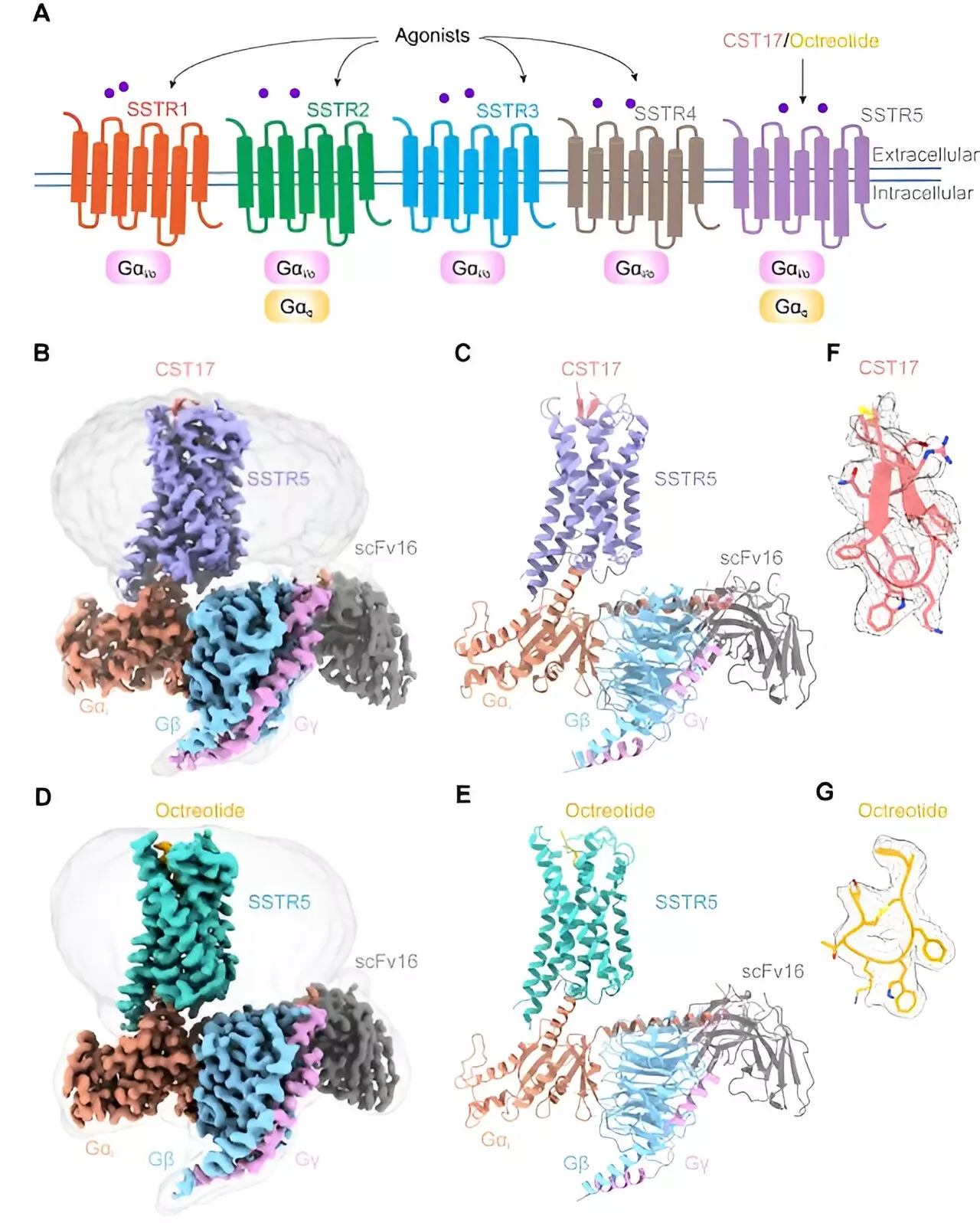Somatostatin receptors (SSTRs) are a vital group of G protein-coupled receptors (GPCRs) with significant roles in hormone regulation and tumor inhibition. Among the five subtypes, SSTR5 is highly expressed in the pituitary gland, making it a potential target for treating endocrine disorders and hormonal imbalance-related tumors. A recent study published in PNAS by a research team from the Shanghai Institute of Materia Medica (SIMM) delves into the three-dimensional structures of SSTR5 in complex with two different ligands, shedding light on the activation mechanisms of this receptor.
The study utilized single-particle cryo-electron microscopy techniques to determine the structures of SSTR5 bound to the natural neuropeptide agonist cortistatin-17 (CST17) and the drug octreotide. The researchers revealed that the binding of these agonists leads to a rearrangement of the “hydrophobic lock” and an outward movement of a specific transmembrane helix, allowing for G protein coupling and activation. Moreover, distinct recognition modes of extracellular loops for CST17 and octreotide were identified, highlighting their agonist selectivity and specificity.
Significance of the Findings
The elucidation of SSTR5 activation mechanisms and its selective recognition of different agonists opens up avenues for the development of novel and highly selective modulators with reduced off-target effects. This structural insight not only provides a deeper understanding of the molecular processes involved in SSTR5 activation but also offers therapeutic opportunities for conditions such as acromegaly, pituitary adenomas, neuroendocrine tumors, and hormonal imbalances. The study lays the groundwork for the design of targeted therapies that could improve treatment outcomes for patients with these conditions.
Moving forward, further research into the structural and functional aspects of SSTR5 activation could lead to the development of more effective and specific therapies for a wide range of diseases. By gaining a comprehensive understanding of the molecular interactions involved in receptor activation, scientists and clinicians can tailor treatments to target specific pathways and minimize adverse effects. The prospects for precision medicine in the field of endocrine disorders and hormone-related tumors are promising, with the potential for improved patient outcomes and quality of life.
The recent study on SSTR5 activation mechanisms provides valuable insights into the structural basis of receptor-ligand interactions, paving the way for the development of targeted therapies with enhanced efficacy and reduced side effects. The research not only advances our understanding of hormone regulation and tumor growth but also holds promise for the future of precision medicine in treating a diverse array of conditions.


Leave a Reply